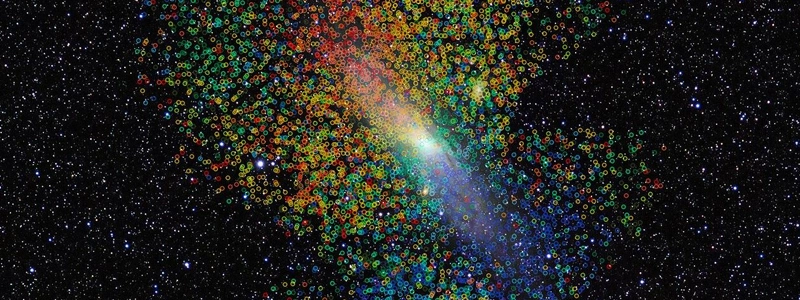Webb discovers furthest merger of black holes
- May 16, 2024
- 0
An international team of astronomers used the NASA/ESA/CSA James Webb Space Telescope to find evidence of an ongoing merger between two galaxies and their massive black holes, when
An international team of astronomers used the NASA/ESA/CSA James Webb Space Telescope to find evidence of an ongoing merger between two galaxies and their massive black holes, when

An international team of astronomers used the NASA/ESA/CSA James Webb Space Telescope to find evidence of an ongoing merger between two galaxies and their massive black holes, when the universe was only 740 million years old. This is the furthest detection of black hole mergers ever achieved and the first time the event has been detected this early in the universe.
Astronomers have found supermassive black holes with masses millions or billions of times that of the Sun in the largest galaxies in the local universe, including our Milky Way galaxy. These black holes have likely had a major impact on the evolution of the galaxies they reside in. However, scientists still do not fully understand how these objects became so large. The discovery of giant black holes in the first billion years after the Big Bang indicates that this growth must have occurred very quickly and very early. Now the James Webb Space Telescope sheds new light on the growth of black holes in the early universe.
Webb’s new observations provided evidence of a long-term merger between two galaxies and their massive black holes, when the universe was only 740 million years old. The system is known as ZS7.
Massive black holes that are actively accumulating matter have characteristic spectrographic features that allow astronomers to identify them. For very distant galaxies like those in this study, these signatures are not available from the ground and can only be seen with Webb.
“We found evidence of very dense, fast-moving gas near a black hole, as well as hot, highly ionized gas that is illuminated by energetic radiation that black holes normally produce during accretion events.” explained Hannah Ubler, lead author of the study. University of Cambridge in Great Britain. “With the unprecedented clarity of its imaging capabilities, Webb also allowed our team to spatially separate the two black holes.”
The team found that one of the two black holes had a mass of 50 million times the mass of the Sun. “The mass of the other black hole is probably similar, but this second black hole is much more difficult to measure because it is buried in dense gas.” explained team member Roberto Maiolino, from the University of Cambridge and University College London in the United Kingdom.
“Our findings suggest that mergers are an important pathway by which black holes can grow rapidly, even at the dawn of space.” Yubler explained. “Together with Webb’s other discoveries of active massive black holes in the distant Universe, our results also show that massive black holes have been shaping the evolution of galaxies from the very beginning.”
“The stellar mass of the system we examine is similar to the mass of our neighbor, the Large Magellanic Cloud” – shared team member Pablo G. Pérez-González from the CSIC/INTA Center for Astrobiology (CAB) in Spain. “We can try to imagine how the evolution of merging galaxies might be affected if every galaxy had a supermassive black hole the size of or larger than the black hole in the Milky Way.”
The team also states that if two black holes merge, they will produce gravitational waves. Such events could be detected by next-generation gravitational-wave observatories, such as the Laser Interferometer Space Antenna (LISA) mission recently approved by the European Space Agency, which will be the first space-based observatory dedicated to studying gravity. waves
“Webb’s results suggest that the lighter systems detected by LISA should be much more common than previously thought.” shared Nora Lutzgendorf, lead researcher on the LISA project from the European Space Agency in the Netherlands. “Most likely this will force us to adjust our models for LISA rates in this mass range. This is just the tip of the iceberg.”
This discovery was the result of observations made with NIRSpec Integral Field Spectroscopy as part of the Galaxy Assembly Program. The team recently received a new Major Program in Webb Observation Cycle 3 to examine in detail the relationship between massive black holes and their host galaxies during the first billion years. An important component of this program will be the systematic investigation and characterization of black hole mergers. This effort will determine the rate of mergers of black holes in early cosmic epochs and evaluate the role of mergers in the early growth of black holes and the rate at which gravitational waves have formed since the beginning of time.
Source: Port Altele
As an experienced journalist and author, Mary has been reporting on the latest news and trends for over 5 years. With a passion for uncovering the stories behind the headlines, Mary has earned a reputation as a trusted voice in the world of journalism. Her writing style is insightful, engaging and thought-provoking, as she takes a deep dive into the most pressing issues of our time.